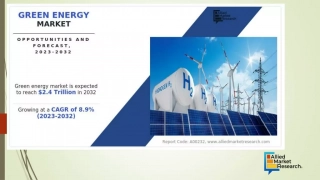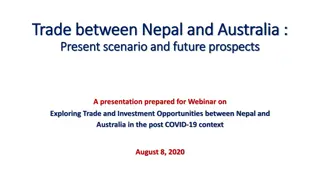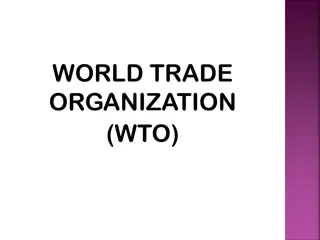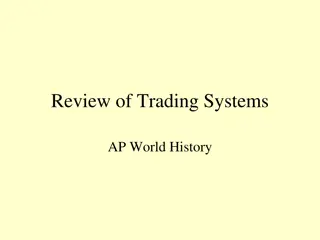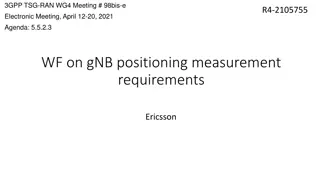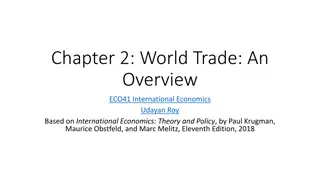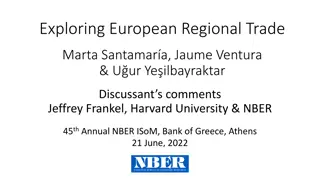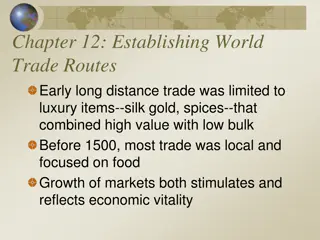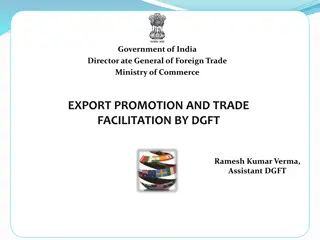Energy-Accuracy Trade-off for Continuous Mobile Device Location
This study explores the trade-off between energy consumption and accuracy in continuous mobile device location services. It discusses how different sensor modalities can be used to optimize battery life while ensuring acceptable user experience.
Download Presentation

Please find below an Image/Link to download the presentation.
The content on the website is provided AS IS for your information and personal use only. It may not be sold, licensed, or shared on other websites without obtaining consent from the author.If you encounter any issues during the download, it is possible that the publisher has removed the file from their server.
You are allowed to download the files provided on this website for personal or commercial use, subject to the condition that they are used lawfully. All files are the property of their respective owners.
The content on the website is provided AS IS for your information and personal use only. It may not be sold, licensed, or shared on other websites without obtaining consent from the author.
E N D
Presentation Transcript
STATICS STATICS (ENGINEERING MECHANICS (ENGINEERING MECHANICS- -I) I) Force Systems, Moment, and couple moment By 3/2/2025 1
Objectives To define what a force is and its types To demonstrate through examples how to find rectangular and non- rectangular components of a give force To explain scalar and vector definitions of moment of a force about an axis To derive expressions for scalar and vector calculations of moment of a given force about a point To illustrate the use of above expressions through a simple example To define couple and couple moments To derive scalar and vector expressions of couple moments To illustrate the concept of couple through examples 3/2/2025 2
Force Systems Force Systems Force: Action of one body on another. Specification include: Magnitude Direction Point of application (or line of action) Effects of a force External: Reactions Internal: Stresses and strains In dealing with the mechanics of rigid bodies concern is only to the net external effects of forces. 3/2/2025 3
Two Two- -Dimensional Force Systems Dimensional Force Systems (Addition of two Forces) (Addition of two Forces) Triangle law Parallelogram law 2 F R R 2 F A A 1 F 1 F 3/2/2025 4
Two Two- -Dimensional Force Systems Dimensional Force Systems (Force Components) (Force Components) j y Rectangular Components Non-rectangular Components F y F 2 F F A x i 1 F x F = = cos ; sin F F F F 0 90 x y F y = + = 2 2 1 and tan F F F = + F F F x y F 1 2 x = + F F F x y = + F F i F j x y 3/2/2025 5
Law of Law of sines sines and cosines and cosines Law of sines Law of cosines B B c a c a C D A C D A b b a b c = + 2 2 2 2 cos c a b ab 2 C = = sin sin sin A B C = + + 2 2 2 cos c a b ab D 3/2/2025 6
Problem Problem- -1 1 The force magnitude a has of 600 Express N. as a vector in terms of the F F unit vecto rs and Identify t . he and x scalar y components of . i j F y = 600 F N 0 30 x 3/2/2025 7
Solution Solution y = 0 600 sin 30 ( ) F i x = 600 F N = 0 600 cos 30 F = 0 600 cos 30 F j y y 0 30 = + F F F x y = 300 + 520 F i j N x = 0 600 sin 30 x F 3/2/2025 8
CHAPTER 2 FORCE SYSTEMS EXAMPLE EXAMPLE - - 1 1 3/2/2025 9
CHAPTER 2 FORCE SYSTEMS EXAMPLE 1 (CONTINUED) Rectangular components
Problem Problem- -2 2 Determine the magnitude of the resultant R of the two forces (shown below), and the angle which R makes with the positive x- axis. 1= T 7 kN 2= T 5 kN O 0 45 0 15 x 3/2/2025 11
Solution Solution This problem can be viewed how two non-rectangular force components can be replaced by a single resultant force R. 2= T 5 kN 0 15 R 0 45 1= T 7 kN = + 2 2 2 Use cosine law : 2 cos c a b ab C 0 45 5 kN = + + 2 2 0 0 2 cos( 45 15 ) R T T T T 0 15 1 2 1 2 x = + + 2 2 0 0 1= T 7 5 2 5 7 cos( 45 15 ) 7 kN = . 6 24 kN 2= T 5 kN O + + 0 0 0 0 sin T sin( 45 15 ) sin( 45 15 ) = = sin T 2 0 0 45 R R 15 x 2 0 sin( 60 ) = = = = 1 . 0 ( 0 sin 5 6939 . 0 sin 6939 ) 43 9 . . 6 24 = = + + = 0 0 0 0 45 43 9 . 45 88 9 . 3/2/2025 12
Alternative Solution Alternative Solution This method can be also discussed in rectangular components. = = = = 0 0 0 0 cos 45 cos 15 7 cos 45 5 cos 15 . 0 12 kN R F T T 1 2 x x = = + = + = 0 0 0 0 sin 45 sin 15 7 sin 45 5 sin 15 . 6 24 kN R F T T 1 2 y y = + = + = 2 x 2 y 2 2 . 0 12 . 6 24 . 6 24 kN R R R 1= T 7 kN 2= T 5 kN R . 6 24 y = = = 1 1 0 tan tan 88 9 . O . 0 12 R x 0 0 45 15 x 3/2/2025 13
CHAPTER 2 FORCE SYSTEMS EXAMPLE EXAMPLE - - 2 2 3/2/2025 14
CHAPTER 2 FORCE SYSTEMS EXAMPLE 2 (CONTINUED) 3/2/2025 15
Moment 3/2/2025 16
Moment In addition to the tendency to move a body in the direction of its application, a force can also tend to rotate a body about an axis. The axis may be any line which neither intersects nor is parallel to the line of action of the force. M=Fd 3/2/2025 17
Moment about a Point Moment about a Point Point of application of a force and line of action of a force are as in Figure: F line of action of a force point of application The magnitude of the moment or tendency of the force to rotate the body about the axis perpendicular to the plane of the body is proportional both to the magnitude of the force and to the moment arm d, which is the perpendicular distance from the axis to the line of action of the force. 3/2/2025 18
Moment: Vector Definition Moment: Vector Definition In some two-dimensional and many of the three-dimensional problems to follow, it is convenient to use a vector approach for moment calculations. = r the from runs ector that Position v = O M r F moment F reference point any po to int the line of action of F A r M A d O The : right - identify t to used is rule hand direction. he Direction moment the Thus of about identified be may O-O as a vector F pointing in the direction of thumb, with the fingers curled in the direction of tendency the rotate. to 3/2/2025 19
Clockwise and Counterclockwise moments: Clockwise and Counterclockwise moments: If tendency of the force is to rotate its moment arm in a counter clockwise manner it is called counterclockwise moment (CCW). We will assume CCW moment as a positive moment (+). If tendency of the force is to rotate its moment arm in a clockwise manner it is called clockwise moment (CW). We will assume CW moment as a negative moment (-). 3/2/2025 20
Zero moments Zero moments - If line of action of the force intersects the axis of rotation, there is no moment of the force about this axis of rotation - If line of action of the force is parallel to the axis of rotation, there is no moment of the force about this axis of rotation 3/2/2025 21
Varignon Varignon s s Theorem The moment of a force about any point is equal to the sum of the moments of the components of the force about the same point. Theorem 3/2/2025 22
Problems Problems For the figure shown below, find moment of 400 N force about point A using: 1.Scalar approach 2.vector approach. y 3 m O x 450 400 N 6 m A 3/2/2025 23
Scalar Approach y 3 m O x 450 400 N 6 m A = + 0 0 400 = cos 45 6 400 sin 45 3 M A 2545 2 . (Countercl N.m ock wise) M Ans. A 3/2/2025 24
Vector Approach y 3 m (-3,0) O x 450 = MA r F 400 N 6 m (0,-6) A i ) ) 8 . j = + = 0 0 400 cos 45 + ( 400 sin = 45 ( 282 282 = 8 . F j i ) 1 ) 1 ) 0 j 3 j = 0 ( + + ( ( ( 3 ( 6 )) 6 r x x i y y j i i 2 2 i j k 0 k = = = 3 6 2545 2 . N.m M r F Ans. A 282 8 . 282 8 . 0 3/2/2025 25
3/2/2025 26
Alternative Solution (Using Varignons Theorem): Assuming that the counterclockwise moment is positive; MB = - Fx.(0.16m) - Fy.(0.2m) where Fx= 400 N and Fy= 693 N MB= -400N(0.16m)-693N(0.2m) = -202.6 N.m We can say MB= -203 N.m Since we assumed that the counterclockwise moment is positive and we obtained a negative moment value, this implies that the direction of MBis actually clockwise. So; the result is exactly the same as before, i.e. 3/2/2025 27
Couple and Couple Moment 3/2/2025 28
Couple Moment The moment produced by two equal, opposite, and non-collinear forces is called a couple. Mo=F(a+d)-Fa Mo=Fd Its direction is counterclockwise 3/2/2025 29
Vector We may also express the moment of a couple by using vector algebra. = + = ( ) M r F r F r F r F A B A B = = ( ) r = r F r F A B M r F where rAand rBare position vectors which run from point O to arbitrary points A and B on the lines of action of F and F, respectively. 3/2/2025 30
Equivalent Couples The Figure shows four different configurations of the same couple M. 3/2/2025 31
Force-Couple Systems The replacement of a force by a force and a couple is illustrated in the Figure, where the given force F acting at point A is replaced by an equal force F at some point B and the counterclockwise couple M=Fd. The transfer is seen in the middle figure, where the equal and opposite forces F and F are added at point B without introducing any net external effects on the body. We now see that the original force at A and the equal and opposite one at B constitute the couple M=Fd, which is counterclockwise for the sample chosen, as shown in the right-hand part of the figure. Thus, we have replaced the original force at A by the same force acting at a different point B and a couple, without altering the external effects of the original force on the body. The combination of the force and couple in the right-hand part of the Figure is referred to as a force couple system. 3/2/2025 32
Counterclockwise and Clockwise couples Counterclockwise and Clockwise couples 3/2/2025 33
Problem-1 Calculate the combined moment of the two 2-kN forces, shown in the Figure, about point O and A using : (i) Scalar approach (ii)Vector approach y 2 kN 1.6 m A 1.6 m x 0.8 m O 2 kN 3/2/2025 34
y 2 kN 1.6 m i- scalar A As 2 kN forces are forming a couple, moments will be the same about A and O as couple moment is independent of moment centres. 1.6 m x 0.8 m O 2 kN = = = 6 . 1 ( 6 . 1 + ) 8 . 0 + = 2 kN.m 8 M M Fd O A 3/2/2025 35
y ii- vector (0, 3.2) ) i ( 2 As 2 kN forces are forming a couple, moments will be the same about A and O as couple moment is independent of moment centres. 1.6 m A r 1.6 m x 0.8 m i 2 O = M r F (0,-0.8) ) 1 x ) 1 y = + ( ( r x i y j 2 2 ) 0 j j = 2 . 3 ( + 8 . 0 = 0 ( ( )) 4 m r i kN.m k j ) i = = = ( 2 = Therefore 4 8 M M r F O A 3/2/2025 36
Problem-2 The top view of a revolving entrance door is shown in the Figure. Two persons simultaneously approach the door and exert forces of equal magnitude as shown. If the resulting moment about point O is 25 N.m, determine the force magnitude F. 3/2/2025 37
components two The = cos 15 and cos 15 couple. a form will moment The of this couple would be F -F = o cos15 F = 1.6 25 N.m M O 16.18 N F Note components The : sin 15 and sin 15 moment any cause not will their as lines of action are F -F passing through O. 3/2/2025 38
Problem-3 A square plate of 200 mm 200 mm is subjected to two forces, each of magnitude 50 N, as shown in the figure: 1. Calculate the moment of the forces about points O, A, C, and D. 2. Find the moment of the forces about y-axis. y 100 mm 50 N 450 D E C 50 N 450 200 mm B 100 mm A x O 200 mm 3/2/2025 39
y 1- 100 mm 50 N 450 D E C 50 N d 450 200 mm B 100 mm A x O 200 mm = + = 2 2 The perpendicu lar distance d between tw o 50 forces N 100 100 141 4 . = mm = = Since two 50 couple. a form forces N The moment of = this couple = is = 50 141 4 . 7070 N.mm M Fd = 7070 = independen is couple As t of moment centers, M N.mm M M M M Ans. O A C D 3/2/2025 40
y 100 mm 50 N 2- 450 D E C 50 N d 450 200 mm B 100 mm A x O 200 mm Since forces are acting in xy plane, they will either intersect the axes or they will be parallel to them. Therefore, moment about x- or y-axis of all the coplanar forces = 0 3/2/2025 41
Problem-4 Replace the 12-kN force acting at point A by a force-couple system acting at point O . y 12 kN 0 30 O x A 4 m 3/2/2025 42
y y 12 kN 12 kN 0 0 30 30 O x x A O A M O 4 m = = = 0 + 12 12 4 sin 30 24 kNm MO d 3/2/2025 43
Problem Problem A force of 400 N is applied at A to the handle of control level which is attached to the fixed shaft OB. Replace this force by an equivalent force at O and a couple. Describe this couple as a vector . M 44
Solution Solution = = 400 400 ( ) N F i i = + + ( ) ( ) ( ) r = x + x i y y j z z k 2 1 2 + 1 2 1 0 = ( 200 ) 0 125 ( ) 0 i j k + 200 = 125 + mm r j k 2 . 0 . 0 125 m r j k i j k = = = + 2 . 0 0 . 0 125 0 50 80 M r F i j k 400 0 0 = + 50 80 N.m M j k 45


